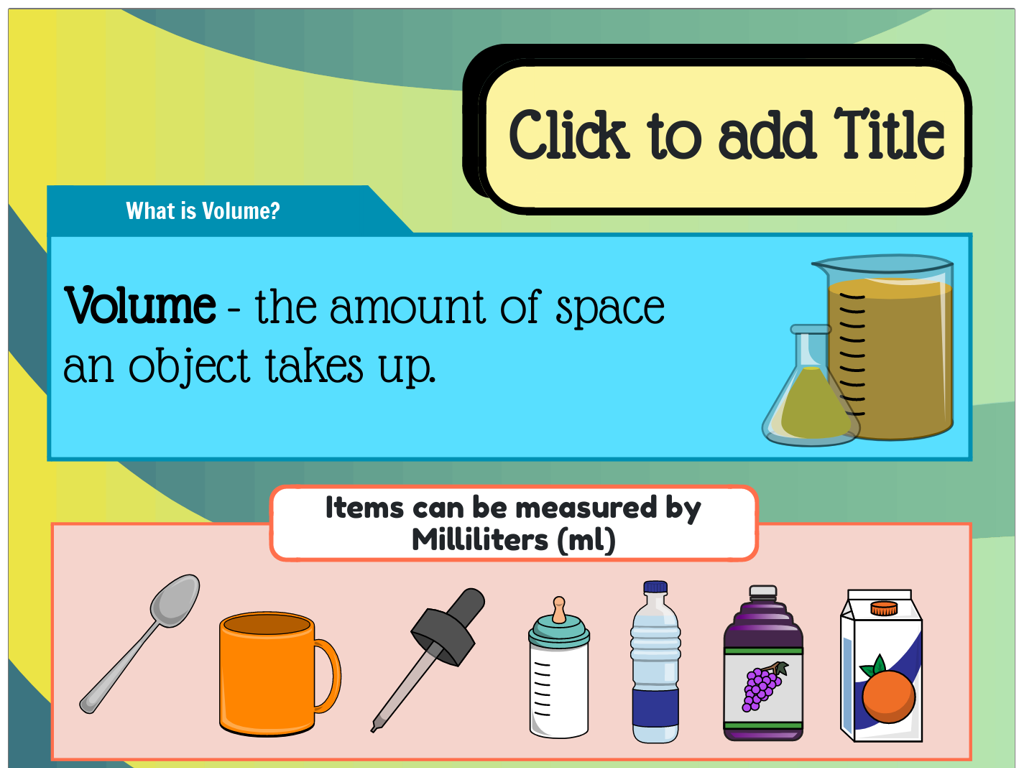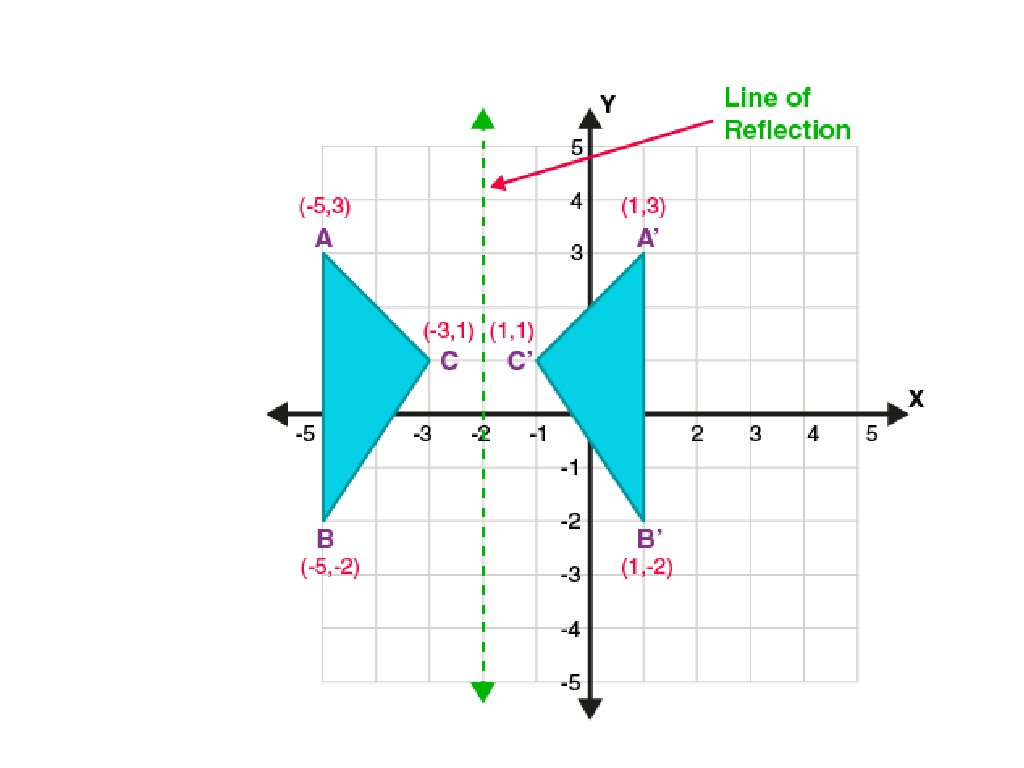Compare Temperatures On Thermometers
Subject: Science
Grade: First grade
Topic: Weather
Please LOG IN to download the presentation. Access is available to registered users only.
View More Content
Weather Wonders: Understanding Temperature
– What is temperature?
– Temperature tells us how hot or cold it is
– Like how warm the sun feels or how chilly snow is
– Using thermometers to measure temperature
– Thermometers show temperature with mercury or colors
– Comparing different temperatures
– See which is warmer or colder by looking at the thermometer readings
|
Begin the lesson by introducing the concept of temperature as a way to tell how hot or cold something is, which is a part of our daily weather experience. Explain that temperature is measured using tools called thermometers. Show different types of thermometers, such as mercury and digital ones, and how they indicate temperature. Engage the students by asking if they have seen a thermometer before and where. Then, demonstrate how to read temperatures from thermometers and compare which one shows a higher or lower temperature. Use relatable examples like comparing the temperature of ice cream to a cup of hot chocolate. Encourage students to ask questions and share their thoughts on temperature differences they’ve experienced.
Understanding Temperature
– What is temperature?
– Temperature describes how hot or cold something is.
– Thermometers measure temperature
– A thermometer is a tool we use to find out the temperature.
– Parts of a thermometer
– A thermometer has a scale, tube with liquid, and numbers to read.
– Reading temperatures
|
Begin the lesson by explaining the concept of temperature as a measure of how hot or cold things are. Introduce the thermometer as the tool used to measure temperature. Show a simple diagram of a thermometer, pointing out the scale, the tube that usually contains a liquid like mercury or colored alcohol, and the numbers that help us read the temperature. Explain that the liquid rises when it’s hot and lowers when it’s cold. Encourage students to think about different temperatures they experience, like a warm day or a cold ice cream. This will help them relate the concept of temperature to their everyday lives.
Reading a Thermometer
– Thermometers show temperature
– Numbers and lines on thermometers help us know how hot or cold it is.
– Red line indicates the level
– The red line or mercury rises with the temperature. The higher it goes, the hotter it is!
– Practice reading temperatures
– We’ll look at different thermometers and learn to read them.
|
This slide introduces students to the basics of reading a thermometer. Explain that a thermometer is a tool we use to measure how hot or cold something is, like the air outside. The numbers and lines on the thermometer help us understand the exact temperature. The red line, filled with a liquid called mercury or a red-colored alcohol, moves up and down to show the temperature. During class, practice with real or illustrated thermometers showing different temperatures. Ask students to identify what temperature the red line is pointing to. This hands-on activity will help solidify their understanding of how to read a thermometer.
Understanding Hot and Cold Temperatures
– Red line goes up when hot
– Red line goes down when cold
– Think of a hot place
– Example: The Sahara Desert is very hot
– Think of a cold place
– Example: Antarctica is very cold
|
This slide is designed to help first graders understand how temperatures are shown on a thermometer. Explain that the red line on a thermometer moves depending on the temperature. When the weather is hot, like in a desert, the red line will rise on the thermometer. When it’s cold, like at the poles, the red line will fall. Ask the students to think of and share examples of hot and cold places they know or have heard of. This will help them relate the concept of temperature to real-world locations and understand how a thermometer visually represents these differences.
Comparing Temperatures with Thermometers
– Thermometers measure temperature
– Red line shows the temperature
– The red line rises with heat
– Higher red line means warmer
– If one red line is higher, that place is hotter
– Let’s practice comparing!
– We’ll use examples to learn this
|
This slide introduces the concept of comparing temperatures using thermometers, which is a practical aspect of understanding weather. Explain that thermometers are tools we use to find out how hot or cold it is. The red line in the thermometer moves up or down depending on the temperature. A higher red line indicates a higher temperature, meaning it’s warmer. Provide examples of different thermometer readings and ask the students to identify which location is hotter or colder. Encourage them to think about different weathers they have experienced and how the temperature felt. This activity will help solidify their understanding of temperature comparison.
Class Activity: Let’s Make Thermometers!
– Create your paper thermometer
– Draw the temperature with red marker
– The red line represents mercury rising to show warmth
– Compare temperatures with a friend
– Discuss: Which is hotter or colder?
– Use words like ‘hotter’, ‘colder’, ‘same as’ in discussion
|
This activity is designed to help first graders understand how thermometers work and to visually grasp the concept of temperature. Each student will craft their own paper thermometer and use a red marker to indicate a temperature. They will then pair up to compare their thermometers and use descriptive language to discuss the differences in temperature. For the teacher: Prepare enough paper and markers for the class. Assist students in drawing the thermometer and marking the temperature. Encourage them to think about what different temperatures feel like and how to represent that on their thermometer. Provide examples of temperatures related to weather, body temperature, or cooking. After the activity, facilitate a discussion to ensure understanding and reinforce the vocabulary.
Wrapping Up: Temperatures and Thermometers
– Great job learning today!
– Thermometers measure hot or cold
– They show us the temperature outside or inside
– Practice reading temperatures
– Use your paper thermometer to tell if it’s hot or cold
– Show what you’ve learned at home!
|
Congratulations to the students for their hard work in understanding how temperatures work and how thermometers are used to measure them. Reinforce the concept that thermometers are tools that help us determine whether it’s hot or cold, which is essential for deciding what to wear and how to plan our day. Encourage the students to practice with their paper thermometers at home, asking them to share their experiences during the next class. This will help solidify their understanding and give them confidence in using thermometers. Remember to praise their efforts and curiosity throughout the lesson.





